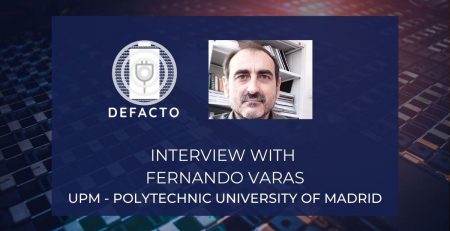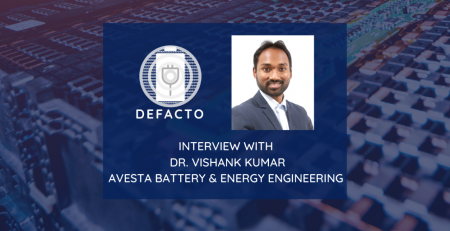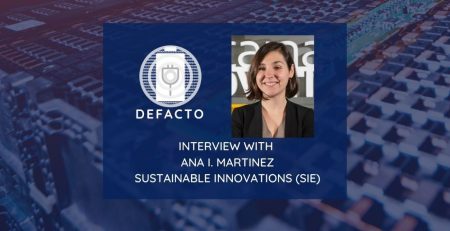Leveraging technology to find the optimum Li-ion battery cells design – Interview with ESI Group
Dr. Fouad el Khaldi, from ESI Group, speaks on this interview about their role in the DEFACTO project, their expectations and the work they will carry out on optimization and sensitivity analysis
Q: What is the main role of ESI Group in DEFACTO?
A: In the project, ESI group is a technology provider bringing their expertise in Model Order Reduction technologies, Machine Learning algorithms, and optimization. These skills and related software tools will be leveraged for finding the optimum design of the different types of Li-ion battery cells developed during the project. Consequently, ESI group has taken the lead of the Work Package 6 that directly addresses one of the specific objectives of DEFACTO: optimization using Reduced Order Modeling.
Q: What are your expectations from the project?
A: ESI expects to build a hybrid twinTM a of Li-ion battery cell, it covers the battery’s downstream value chain (from material to cell design and production). DEFACTO will enable ESI to put on the market a parametric fast, accurate and open solution. The model obtained from model order reduction of the best-in-class simulation model developed by the consortium and supplemented by AI algorithms will allow the provision of results that exactly match the experimental measurements. This hybrid twinTM will be commercialized to be further reused in the bottom-up design of full batteries, with the ultimate goal to make a hybrid twinTM of a battery. Such a model will then enable the simulations of the autonomy of electric vehicles and will possibly be integrated into the onboard route advisor of the navigation system. Clearly, our targeted markets are the stakeholders of the transportation industry.
Q: Can you talk a bit about the work you are planning to do on optimization and sensitivity analysis?
A: Optimization requires exploration of the whole design space to find the best technical solution addressing the target objectives. This involves trying many combinations of parameter values and evaluating the results of interest for each of them. To achieve this goal in a reasonable timeframe,
each simulation run shall execute very fast. The battery cell model used for the optimization study is the p4D Finite Elements model developed by CIDETEC that simulates the performance and the ageing phenomena. It integrates a realistic representation of the materials behavior computed from an upscale of the manufacturing process simulation results of the cell obtained in other work packages.
ESI and CEA will first perform a sensitivity analysis of the different parameters of the p4D model, by quantifying their uncertainty (comparison of experimental measurements values), and by evaluating how this uncertainty is propagated to the model’s results. This step will help identifying which are the parameters that have more influence on the cell’s performance. Then, after identifying these critical parameters, to reach the objective of fast execution, ESI will build a ROM * of the p4D model, using the S-PGD method. It’s a non-intrusive method that requires a relatively small number of runs in the DoE** plan, and that supports scaling-up the number of parameters quite well.
To validate this reduced model, ESI will compare its results with corresponding experimental results from the Lab testing. The observed difference will be itself modeled using machine learning algorithms and applied as a correction to the ROM’s results. This final hybrid twinTM will enable fast and accurate evaluation of the different design options tested during the optimization study. This study will be led by CIDETEC and ESI will also provide support to choose the most suitable optimization algorithm.












Leave a Reply